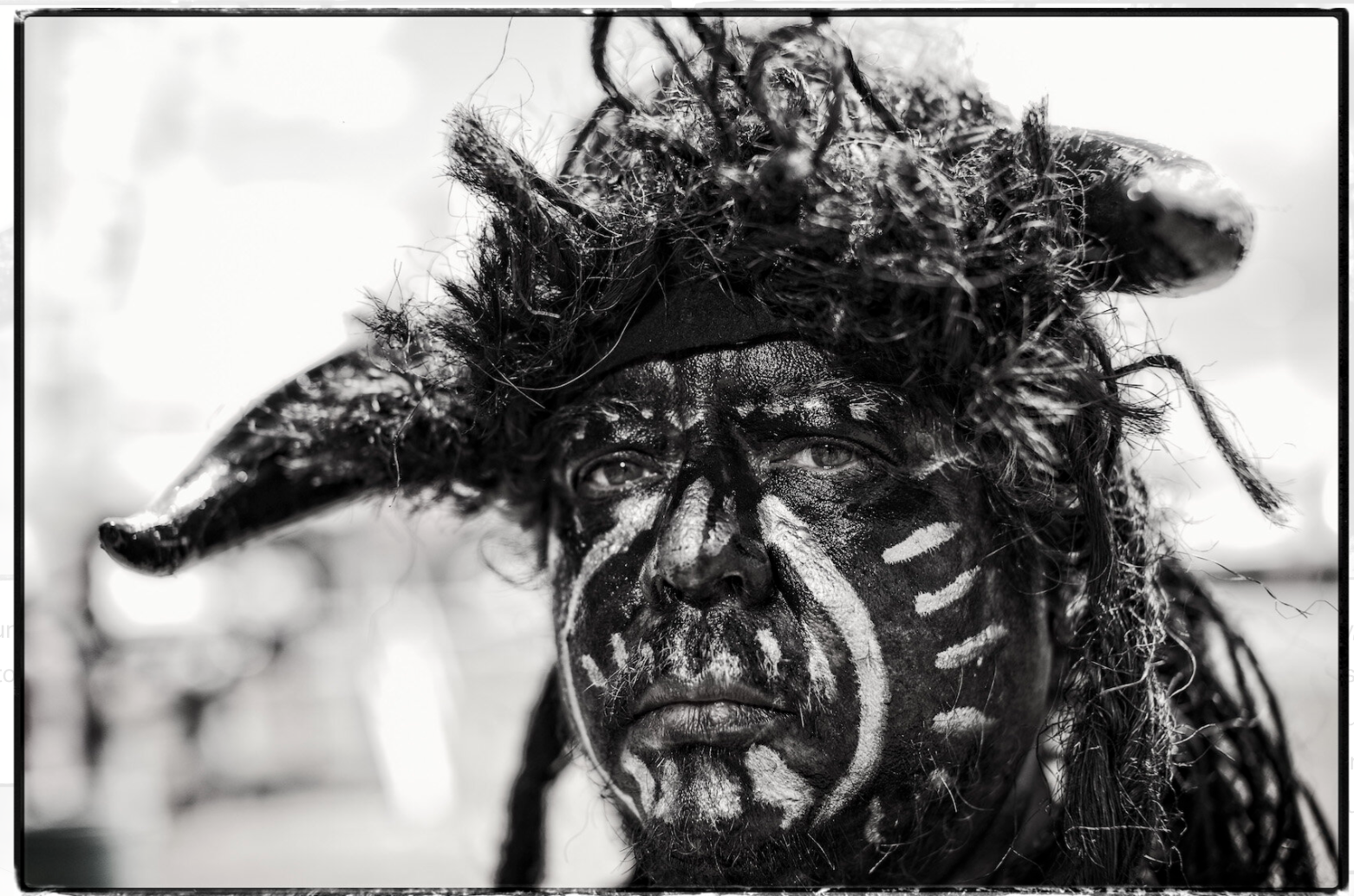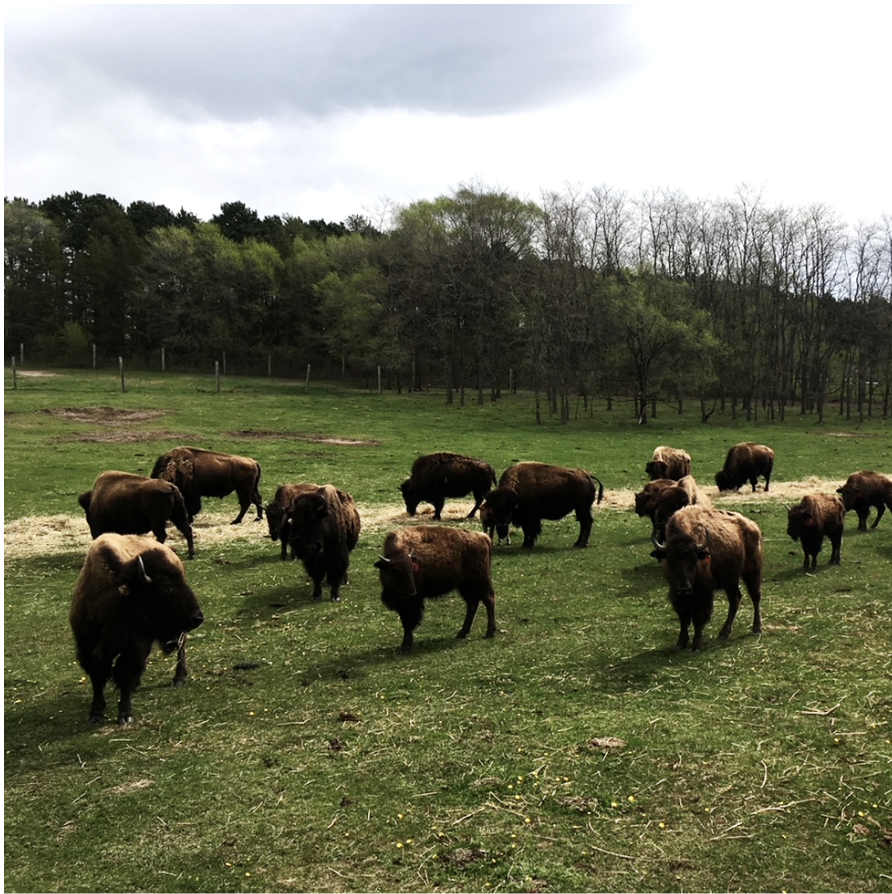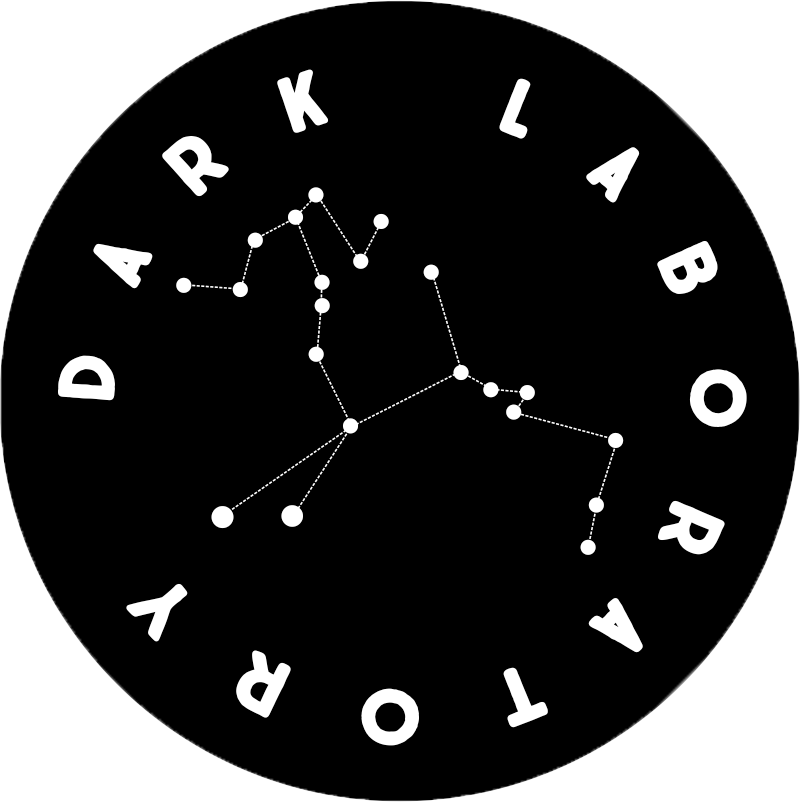
I’m New Here:
BLACk and Indigenous Media Ecologies
A Digital Exhibition
Curators: Tao Leigh Goffe and Tatiana Esh
About the Exhibition
“I did not become someone different that I did not want to be, but I’m new here. Can you show me around? ”
“How does one revisit the scene of subjection without replicating the grammar of violence?”
The Dark Laboratory presents I’m New Here: Black and Indigenous Media Ecologies, an exhibition that explores race and ecology through photography and narrative. Seven photographers—Abigail Hadeed, Nadia Huggins, Kai Minosh Pyle, Allison Arteaga, steve núñez, Melia Delsol, and Dóra Papp—spanning the Western hemisphere tell stories beyond the Western narrative of conquest about the entanglement of Black and Native presence and survivance in unnamed grasses, fields, and shores of seas. Narrating histories of the dispossession of Native sovereignty and African enslavement, the artists offer visual commentary with their cameras as a lens on race and climate. The title of the exhibition draws from the lyrics of the late African American musician and poet, Gil Scott-Heron, and his 2010 album.
Living and working in the United States, the Caribbean, and Latin America – from North Carolina to Peru to Trinidad and Tobago to Wisconsin to St. Vincent—the photographers depict how race is present in the land and sea. They explore how Afro-Indigenous ecologies and forms of relationality shape their personal experiences. Together the photographs approach global imperial histories with the intimate scale of both landscape and portrait photography. The exhibition is framed by ethics of Black feminist theorist Saidiya Hartman’s poignant question about revisiting the scene of violence without replicating the grammar. The visual grammar of how photography has been a colonial tool is challenged by the perspective of the featured artists. Black and Indigenous relationality shifted after the global crises of 2020 with the term BIPOC entering the national lexicon, and these photographs respond to the multiple timelines after apocalypse and renewal.
I’m New Here: Black and Indigenous Media Ecologies presents a chorus of contemporary art perspectives that answer the call for a vision of combined ecological and racial justice. Drawing from the Afro-diasporic Americas and Native Americas—Amerindian, Quechua, Oneida, Trinidadian, St. Vincentian—the photographic essays connect Black and Native languages and geographies. They reflect on climate crisis, erasure, and the power and poetry of non-linear storytelling to narrate the ongoing conquest and the cosmos beyond it.
The exhibition is a component of the 2021 Dark Laboratory Photographic Narrative Prize conceived by Dr. Tao Leigh Goffe, Executive Director of the lab. It is accompanied by a virtual reality (VR) gallery and print catalogue.
Artists: Abigail Hadeed, Nadia Huggins, Kai Pyle, Allison Arteaga, steve núñez, Melia Delsol, and Dóra Papp.
Curators: Tao Leigh Goffe and Tatiana Esh.
For more on the exhibition read the curatorial statement, published in the peer-reviewed academic publication Refract: A Visual Studies Journal, Volume 4.
For the I’m New Here reading list, visit our Dark Lab Bookshelf at Bookshop.org to support independent booksellers.
Listen to an interview for more about the exhibition with Essah Díaz, Episode 121 of the podcast Essah’s Way entitled “Ancestral and Artistic Constellations.”

"Warriors of Huracan," Photograph Series by Abigail Hadeed

"Alli ruraqmi kanki," Photograph Series by Allison Arteaga

"Circa no future," Photograph Series by Nadia Huggins

‘Free the Land.’ Photograph Series by steve nuñez

"Drifted Away" Photograph Series by Melia Delsol and Dóra Papp

"Fields Have Eyes, Woods Have Ears, and Waters Have Memories," Photograph Series by Kai Minosh Pyle
There are many voices and visions present in I’m New Here. Many thanks to the artists for their offerings, for the substance they provided to meditate on shared ecologies and histories. The exhibition is dedicated to the memory of the two daughters who were lost in Dominica to Hurricane Maria, referenced in Drifted Away; thanks also to Dr. Adom Philogene Heron, who shared his essay “Besides Rivers,” which is, in its way, an elegy wherein he dwells on the memory of time spent in Dominica with Yakairah and Destiny. In honor of Melia Delsol’s beloved daughters and the nameless others lost to the hurricanes, we dedicate this exhibition. In Kai Minosh Pyle’s Fields Have Eyes, Woods Have Ears, and Waters Have Memories, we dedicate this exhibition to the memory of Jonathon Tubby, who was murdered by the Green Bay Police.
Adding to the collective chorus, we give thanks to Accra Shepp, Ayelen Dolores Simms, and Tracy Rector, whose analysis of the artwork is featured and woven throughout. Many thanks to the subjects of Abigail Hadeed’s artwork: Burton Sankeralli, Sango Fayomi, Ogun Moewa, Chief Wadaga Raja, and Ifa Moloko, Darlington “Boysie” Henry, Ogun Moewa Narrie Approo, Joan Sansavior. Special thanks to digital storytellers and fellow travelers Felicia Chang and Zaake De Coninck for their inspiration.
We would like to thank Leah Sweet (Herbert F. Johnson Museum of Art), who selected artwork drawing on Black and Indigenous themes from the museum’s collection that helped us think alongside this photographic work by contemporary artists. Thanks to Dr. Sarah Jane Cervenak and Dr. J. Kameron Carter for the inspiring ideas and conception of the Black Outdoors. Thanks to Bam Willoughby and Toya Mary Okonkwo, whose contributions are featured in the virtual reality component of the exhibition.
We would also like to thank the Dark Laboratory Theoreticians, Technicians, and Advisory Board for being part of the intellectual community we are building on racial and climate justice. Thanks to Dr. Paul Fleming, Dr. Tim Murray, and Dr. Jeremy Braddock for their support of this work.
This exhibition was made possible thanks to the generous support of the Rural Humanities, a Mellon Foundation sponsored initiative. Cornell University Feminist, Gender, and Sexuality Studies and Cornell University Media Studies also provided support.

